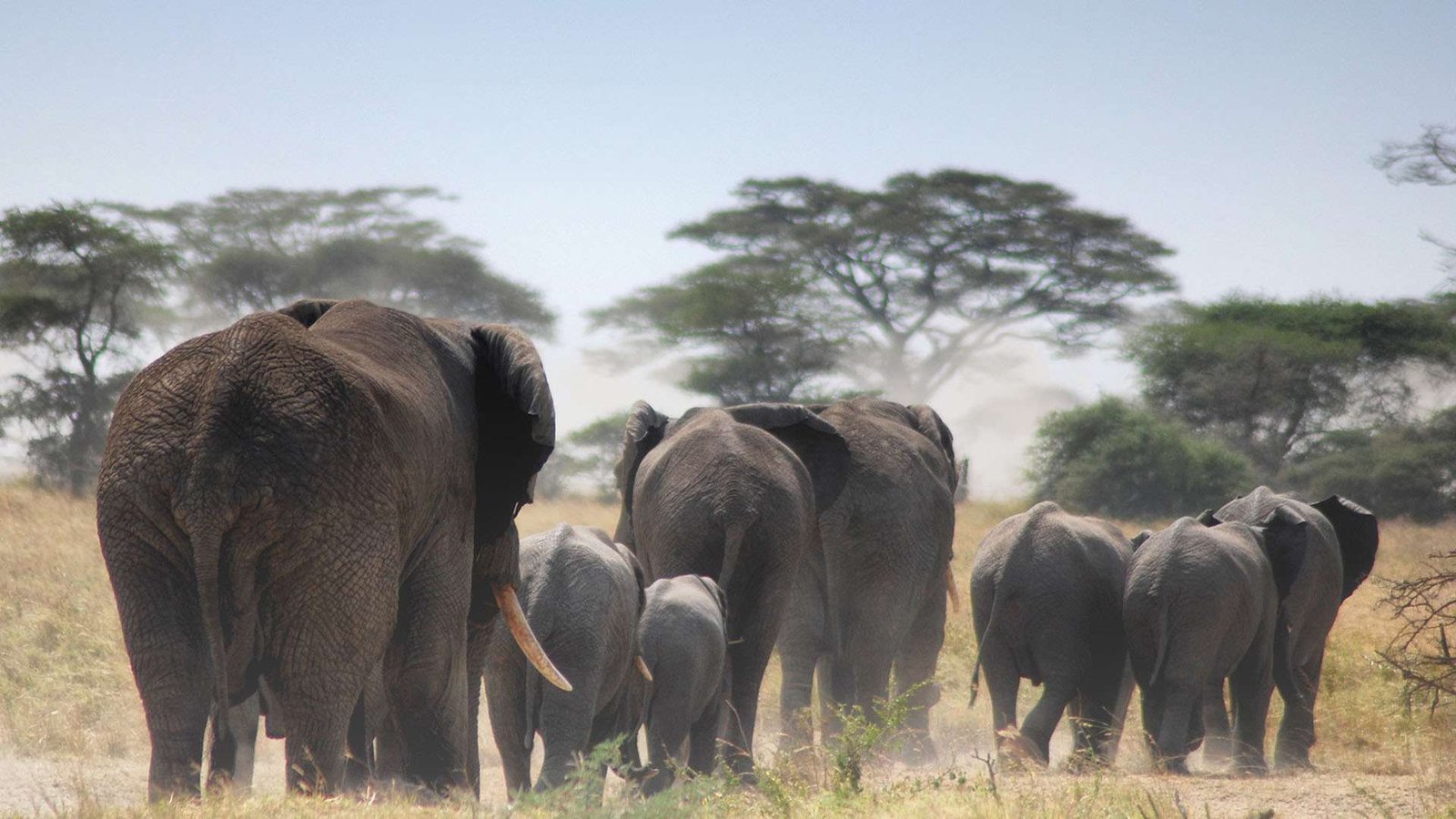Tanzania, an East African jewel, is renowned for its diverse wildlife and stunning landscapes. As a prime safari destination, it offers two distinct regions: the North and the South. Each area boasts unique experiences and attractions, making Tanzania a top choice for safari enthusiasts. In this guide, we will explore the differences, highlights, and practical tips for navigating the best Tanzania safari routes.
Tanzania is situated in East Africa, bordered by Kenya and Uganda to the north, Rwanda, Burundi, and the Democratic Republic of the Congo to the west, Zambia, Malawi, and Mozambique to the south, and the Indian Ocean to the east. Its varied terrain includes savannahs, mountains, and coastal regions.

Tanzania experiences a tropical climate with two rainy seasons: the long rains from March to May and the short rains in November and December. The best times to visit are during the dry seasons, from June to October and January to February, when wildlife is more easily observed.
The Northern Circuit includes iconic destinations like the Serengeti, Ngorongoro Crater, Lake Manyara, and Tarangire National Park. This region is famous for the Great Migration, where millions of wildebeest, zebras, and gazelles traverse the plains in search of fresh grazing grounds.
The Southern Circuit, less crowded and more remote, features Selous Game Reserve, Ruaha National Park, Mikumi National Park, and Udzungwa Mountains National Park. This area offers a more secluded and intimate safari experience, with vast landscapes and diverse wildlife.
Tanzania is home to over 120 ethnic groups, each with its unique customs and traditions. The Maasai, known for their distinctive dress and warrior culture, are among the most well-known. Visitors can experience traditional dances, music, and local markets showcasing crafts and produce.
Tanzanian cuisine is a fusion of African, Indian, and Arab influences. Staples include ugali (a maize porridge), rice, beans, and various meats and fish. Popular dishes include nyama choma (grilled meat), samaki (fish), and pilau (spiced rice).
Swahili and English are the official languages of Tanzania. Swahili is widely spoken and serves as a lingua franca among the diverse ethnic groups. Learning basic Swahili phrases can enhance the travel experience and interactions with locals.
The Serengeti, a UNESCO World Heritage Site, is renowned for its annual migration and diverse wildlife, including the Big Five (lion, leopard, elephant, buffalo, and rhino). Key attractions include the Seronera area for its abundant wildlife and the Grumeti River for dramatic crossings during the migration.

The Ngorongoro Crater, the world’s largest inactive volcanic caldera, offers stunning scenery and dense wildlife populations. Visitors can expect to see black rhinos, lions, elephants, and a variety of bird species. The crater rim provides panoramic views and luxurious lodges.
Famous for its tree-climbing lions and diverse birdlife, Lake Manyara National Park offers a mix of forests, woodlands, and swamps. The alkaline lake attracts thousands of flamingos, creating a striking pink shoreline.
Known for its large elephant herds and ancient baobab trees, Tarangire National Park provides a quieter alternative to the Serengeti. During the dry season, the Tarangire River attracts wildlife from across the region, offering excellent game viewing opportunities.
The Selous, Africa’s largest game reserve, offers a remote and uncrowded safari experience. Boat safaris on the Rufiji River provide unique perspectives on wildlife, including hippos, crocodiles, and diverse bird species. The reserve is also home to rare African wild dogs.
Ruaha National Park, Tanzania’s largest national park, is known for its rugged beauty and high densities of elephants and predators. The park’s diverse landscapes, including the Great Ruaha River, attract various species and offer excellent game viewing year-round.
Often compared to the Serengeti for its savannah landscape, Mikumi National Park is a convenient and accessible safari destination. The Mkata Floodplain is a prime area for spotting wildlife, including lions, giraffes, and wildebeest.
A biodiversity hotspot, Udzungwa Mountains National Park is ideal for hiking and exploring unique flora and fauna. The park’s diverse ecosystems, from rainforest to mountain peaks, support rare primates and endemic plant species.
Game drives are the cornerstone of any safari, offering the chance to observe wildlife in their natural habitat. Both the Northern and Southern Circuits offer exceptional game drives, with options for day and night safaris.

Walking safaris, particularly popular in the Southern Circuit, provide an immersive experience. Led by experienced guides, these walks allow visitors to learn about the ecosystem, track animals, and appreciate the smaller details of the bush.
Exclusive to the Southern Circuit, boat safaris on rivers and lakes offer a unique way to view wildlife. The Rufiji River in Selous Game Reserve and the Great Ruaha River in Ruaha National Park are prime locations for these excursions.
For a breathtaking perspective, hot air balloon safaris over the Serengeti provide stunning aerial views of the plains and wildlife below. This experience is especially magical during the Great Migration.
Engaging with local communities through cultural tours enriches the safari experience. Visitors can learn about Maasai traditions, visit local markets, and participate in traditional dances and ceremonies.
Tanzania is a birdwatcher’s paradise, with over 1,000 species recorded. Key birding locations include Lake Manyara, Tarangire, and the wetlands of Selous Game Reserve. Rare and endemic species add to the allure for bird enthusiasts.

Photography safaris cater to both amateur and professional photographers, offering tailored experiences to capture Tanzania’s wildlife and landscapes. Guides provide insights on the best times and locations for optimal shots.
From luxury lodges to budget-friendly campsites, Tanzania offers a range of accommodation options. In the Northern Circuit, high-end lodges provide comfort and stunning views, while the Southern Circuit offers more rustic and secluded camps.
Getting around Tanzania can involve flights, road transfers, and even boat rides. Domestic flights are the most efficient way to travel between the Northern and Southern Circuits, while 4×4 vehicles are essential for game drives and park exploration.
Packing for a safari requires thoughtful preparation. Essentials include lightweight clothing in neutral colors, sturdy walking shoes, a hat, sunglasses, sunscreen, insect repellent, and a good camera with extra batteries and memory cards.
Tanzania is generally safe for tourists, but precautions are necessary. Vaccinations for yellow fever, typhoid, and hepatitis are recommended. Malaria prophylaxis is also advised. Travelers should drink bottled water and follow food safety guidelines.
Most visitors to Tanzania require a visa, which can be obtained on arrival or online before travel. A valid passport with at least six months’ validity is necessary. It’s important to check the latest entry requirements before departure.
Respecting wildlife is crucial for a safe safari experience. Always follow guide instructions, maintain a safe distance from animals, and never attempt to feed or provoke them.
In addition to vaccinations and malaria prophylaxis, travelers should carry a basic first aid kit, stay hydrated, and protect themselves from the sun. It’s advisable to have comprehensive travel insurance that covers medical evacuation.
Travelers should stay informed about the latest COVID-19 guidelines, including testing and vaccination requirements. Mask-wearing, hand hygiene, and social distancing are important to prevent the spread of the virus.
A safari in Tanzania can vary widely in cost, depending on factors like accommodation, duration, and activities. Budget travelers can opt for camping and self-drive options, while luxury safaris offer all-inclusive packages with high-end lodges and guided tours.
To save on costs, consider traveling during the shoulder seasons (April-May and November) when prices are lower, and crowds are thinner. Booking in advance, traveling in groups, and choosing mid-range lodges can also help reduce expenses.
The Tanzanian Shilling (TZS) is the local currency. Credit cards are accepted at major hotels and lodges, but it’s advisable to carry cash for tips and small purchases. ATMs are available in major towns and cities.
Tanzanian cuisine offers a rich array of flavors. Must-try dishes include:
When dining with locals, it’s polite to wash hands before eating, as many meals are eaten with the hands. Offering and accepting food with the right hand is customary. Sharing food and engaging in conversation are important aspects of Tanzanian dining culture.
Tanzania’s Northern and Southern Circuits each offer unique and unforgettable safari experiences. The Northern Circuit is renowned for its iconic parks and the Great Migration, while the Southern Circuit provides a more secluded and intimate adventure. Both regions boast diverse wildlife, stunning landscapes, and rich cultural experiences.
For first-time visitors, the Northern Circuit is ideal for its well-known attractions and accessible infrastructure. Those seeking a more off-the-beaten-path experience will find the Southern Circuit’s remoteness and exclusivity appealing. Regardless of the choice, a Tanzanian safari promises breathtaking moments and lifelong memories.
Plan your Tanzania safari today and embark on an adventure that will connect you with nature, culture, and the spirit of Africa. Whether you choose the bustling Northern Circuit or the tranquil Southern Circuit, Tanzania awaits with open arms and endless discoveries.
[trustindex no-registration=tripadvisor]
African Diurnal is accredited by leading international travel associations, including TATO. As a result, you can travel with complete peace of mind since your trip is financially protected.



